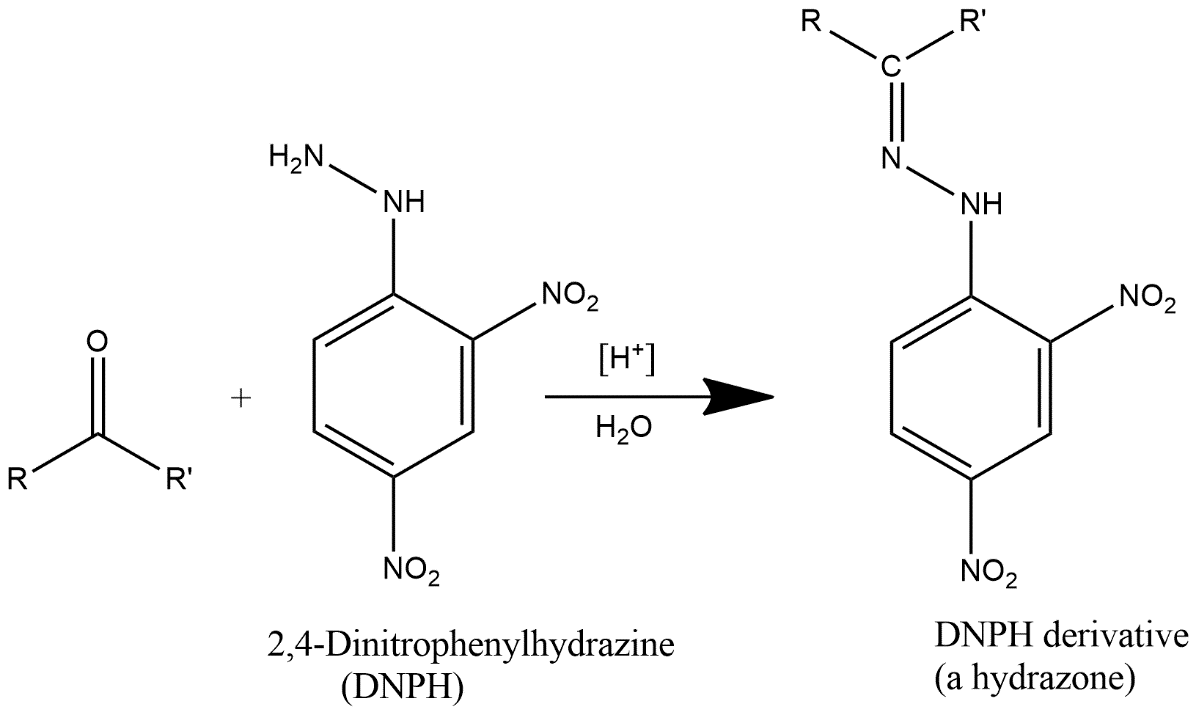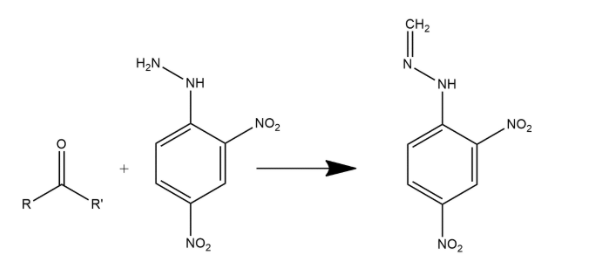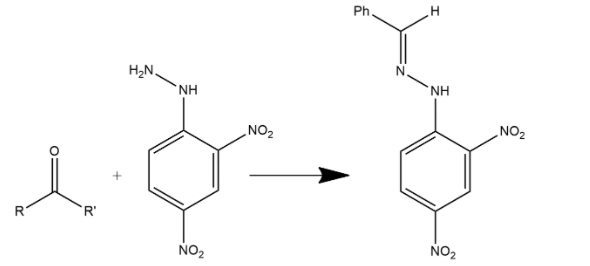
2,4 DNP reacts with carbonyls (aldehydes/ketones) to give yellow ppt. This reaction is a dehydration type reaction as shown above.
A mixture of benzaldehyde and formaldehyde is heated with 2,4DNP. How many organic products will be obtained after fractional distillation?


Answer
558.9k+ views
2,4-DNPH is generally known by the name 2,4-Dinitrophenylhydrazine also known by Brady’s or Borche’s reagent. It is represented by the chemical formula ${{C}_{6}}{{H}_{3}}{{(N{{O}_{2}})}_{2}}NHN{{H}_{2}}$. It is a substitute for hydrazine and red to orange solid.
Complete step by step answer: DNP is generally used as a test to identify the carbonyl group which is associated with aldehyde or ketone. It is generally available as a wet powder which is prepared by the reaction of hydrazine sulfate with 2,4-dinitrochlorobenzene. It is prepared by dissolving 2,4-dinitrophenylhydrazine in a solution which contains methanol and some concentrated sulfuric acid and the medium should be slightly acidic in nature.
Fractional distillation is the process in which separation of a mixture into its components parts. Chemical compounds are separated by heating them to a temperature at which one or more fractions of the mixture will vaporize. When a mixture of benzaldehyde and formaldehyde is heated with 2,4DNP then two types of organic products will be obtained after fractional distillation which can be shown as:

The other product is:

These other two products are very mirror exam products and an even mirror hydrazine coupling products.
Note: 2,4 DNP is generally used to detect the carbonyl functionality of ketone or aldehyde groups. Formation of a yellow, orange or red precipitate gives the signals of positivity of the test and if the carbonyl compound is aromatic then precipitate will be red and if aliphatic then precipitate will be of yellow color.
Complete step by step answer: DNP is generally used as a test to identify the carbonyl group which is associated with aldehyde or ketone. It is generally available as a wet powder which is prepared by the reaction of hydrazine sulfate with 2,4-dinitrochlorobenzene. It is prepared by dissolving 2,4-dinitrophenylhydrazine in a solution which contains methanol and some concentrated sulfuric acid and the medium should be slightly acidic in nature.
Fractional distillation is the process in which separation of a mixture into its components parts. Chemical compounds are separated by heating them to a temperature at which one or more fractions of the mixture will vaporize. When a mixture of benzaldehyde and formaldehyde is heated with 2,4DNP then two types of organic products will be obtained after fractional distillation which can be shown as:

The other product is:

These other two products are very mirror exam products and an even mirror hydrazine coupling products.
Note: 2,4 DNP is generally used to detect the carbonyl functionality of ketone or aldehyde groups. Formation of a yellow, orange or red precipitate gives the signals of positivity of the test and if the carbonyl compound is aromatic then precipitate will be red and if aliphatic then precipitate will be of yellow color.
Recently Updated Pages
A man running at a speed 5 ms is viewed in the side class 12 physics CBSE

The number of solutions in x in 02pi for which sqrt class 12 maths CBSE

State and explain Hardy Weinbergs Principle class 12 biology CBSE

Write any two methods of preparation of phenol Give class 12 chemistry CBSE

Which of the following statements is wrong a Amnion class 12 biology CBSE

Differentiate between action potential and resting class 12 biology CBSE

Trending doubts
What are the major means of transport Explain each class 12 social science CBSE

Which are the Top 10 Largest Countries of the World?

Draw a labelled sketch of the human eye class 12 physics CBSE

Explain sex determination in humans with line diag class 12 biology CBSE

Explain sex determination in humans with the help of class 12 biology CBSE

Differentiate between homogeneous and heterogeneous class 12 chemistry CBSE




